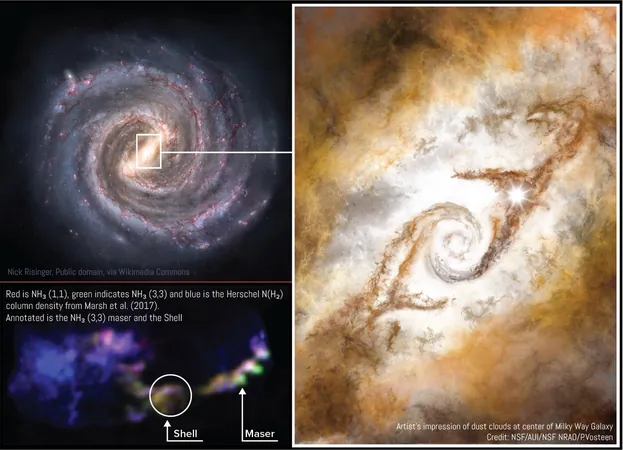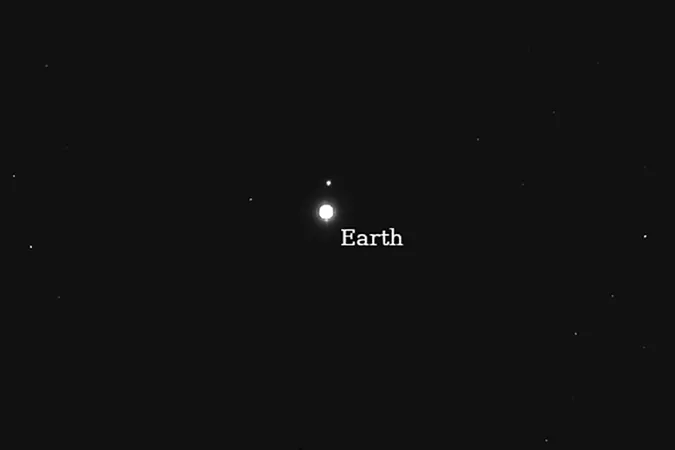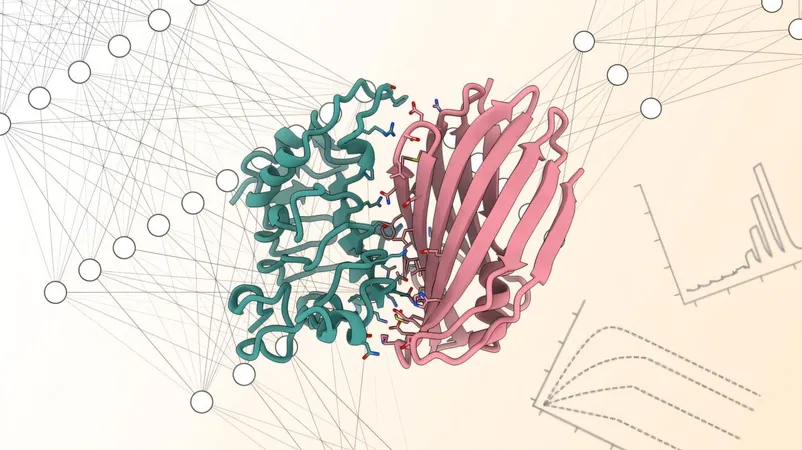
Astronomers Unveil Hidden Giant Molecular Cloud in the Milky Way
2025-07-16
Author: Jacob
Astronomers Make an Astonishing Discovery
In a breathtaking revelation, an international team of astronomers has uncovered a massive molecular cloud tucked away in a lesser-known region of our Milky Way galaxy. Measuring an impressive 60 parsecs—or 200 light years—long, this newly identified Giant Molecular Cloud (GMC) is set to change our understanding of galactic structures.
The Midpoint Cloud: A Cosmic Treasure Trove
In a groundbreaking study featured in the Astrophysical Journal, researchers harnessing the power of the U.S. National Science Foundation Green Bank Telescope (NSF GBT) have come across a molecular cloud dubbed M4.7-0.8, affectionately nicknamed the Midpoint cloud. Their findings reveal a vibrant region teeming with cosmic activity, including potential hotspots for new star formation.
"One significant discovery was the GMC itself. Until our observations, this cloud remained hidden from view," said Natalie Butterfield, the leading author and scientist at the NSF National Radio Astronomy Observatory (NSF NRAO). She added, "Through measuring its size, mass, and density, we confirmed it was indeed a giant molecular cloud."
A Journey of Cosmic Material
"These dust lanes act like concealed rivers of gas and dust funneling materials into the heart of our galaxy," Butterfield elaborated. The Midpoint cloud serves as a transition zone where materials from the galaxy’s disk are moving toward the more extreme conditions at the galactic center, providing a rare glimpse into the early stages of gas accumulation.
Exciting Discoveries Within the Cloud
The NSF GBT observations concentrated on critical molecules such as ammonia (NH3) and cyanobutadiyne (HC5N), which act as indicators of dense gas. The team's data not only revealed the previously unknown Midpoint cloud but also included exciting findings:
— **A New Maser:** An undiscovered natural source of intense microwave radiation linked to ammonia gas suggests promising signs of active star formation.
— **Hot Potential Star Birth Sites:** The cloud is dotted with compact clumps of gas and dust poised to birth new stars. One particularly intriguing clump, named Knot E, may qualify as a free-floating evaporating gas globule, rapidly eroded by nearby stellar radiation.
— **Evidence of Stellar Feedback:** A shell-like structure within the cloud hints at energy released from dying stars shaping the surrounding environment.
— **Turbulent Gas:** The gas swirling within this cloud is in a state of chaos, reminiscent of what is seen in the central regions of galaxies. This turbulence may arise from material influx along dust lanes or collisions with other clouds.
Understanding Galactic Evolution
"The dynamics of star formation in galactic bars are quite enigmatic," remarked Larry Morgan from the NSF Green Bank Observatory (NSF GBO). "Strong forces in these areas can suppress star formation, yet the leading edges—like where the Midpoint is—can accumulate dense gas and spark new stellar births."
These groundbreaking findings position the Midpoint cloud as a vital conduit for material flowing from the Milky Way's disk to its core. By investigating this cloud, astronomers will unveil deeper insights into how galaxies construct their central structures and foster new star formation in extreme environments.









 Brasil (PT)
Brasil (PT)
 Canada (EN)
Canada (EN)
 Chile (ES)
Chile (ES)
 Česko (CS)
Česko (CS)
 대한민국 (KO)
대한민국 (KO)
 España (ES)
España (ES)
 France (FR)
France (FR)
 Hong Kong (EN)
Hong Kong (EN)
 Italia (IT)
Italia (IT)
 日本 (JA)
日本 (JA)
 Magyarország (HU)
Magyarország (HU)
 Norge (NO)
Norge (NO)
 Polska (PL)
Polska (PL)
 Schweiz (DE)
Schweiz (DE)
 Singapore (EN)
Singapore (EN)
 Sverige (SV)
Sverige (SV)
 Suomi (FI)
Suomi (FI)
 Türkiye (TR)
Türkiye (TR)
 الإمارات العربية المتحدة (AR)
الإمارات العربية المتحدة (AR)